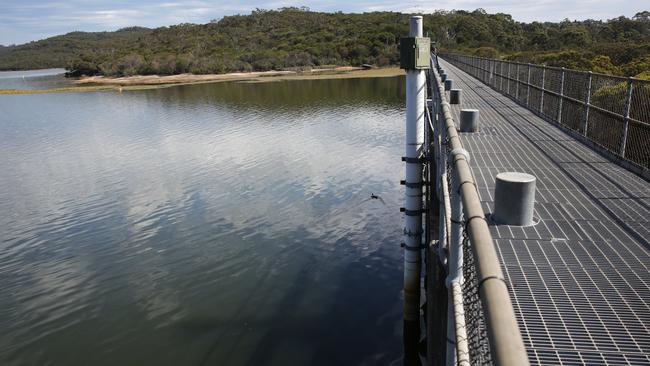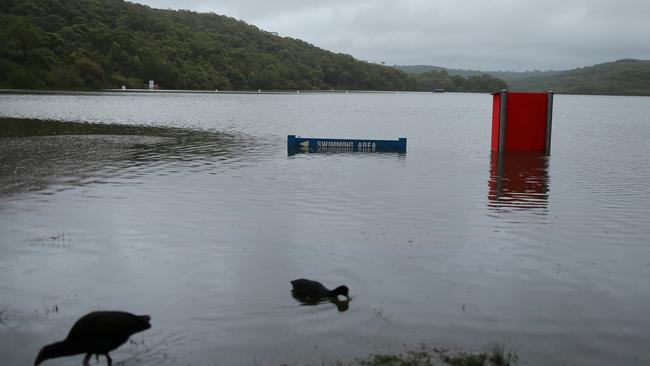Scientists find toxin danger in Manly Dam
A TOXIC chemical linked to an incurable deadly illness has been found at a popular swimming spot on Sydney’s northern beaches — and it is the first time it has been found in Australia.

Manly
Don't miss out on the headlines from Manly. Followed categories will be added to My News.
A TOXIC chemical that may contribute to the development of an incurable illness has been found in Manly Dam.
The neurotoxin, which is linked to motor neurone disease, was discovered in algae on the lake, which is popular for swimming, fishing and water skiing.

Called BMAA (beta-methylamino-l-alanine), it was detected by University of Technology Sydney (UTS) researchers in surface scum as part of a project checking if the chemical exists in NSW waterways.
As part of his PhD project, researcher Brendan Main, along with Associate Professor Ken Rodgers from the UTS School of Life Sciences also analysed samples collected from Sydney’s Centennial Park and the Botany wetlands as well as the Darling and Murrumbidgee rivers in the state’s west.
The highest concentration of BMAA was detected in Manly Dam. The Manly sample was collected in March last year.

In a scientific paper they co-authored with five other experts, the researchers said it was the first time BMAA had been detected in Australia.
The BMAA was produced by cyanobacteria — commonly known as blue-green algae.
It has been linked to motor neurone disease (MND), a progressive illness that affects a person’s ability to move, speak, eat and breathe because it attacks nerves in the brain and spinal cord.

About 50 per cent of sufferers die within 18 months of diagnosis.
Mounting evidence suggests long-term, low-level exposure to the algal blooms may increase the incidence of some neurological disorders, including MND and Alzheimer’s disease.
Prof Rodgers said on Tuesday that while its presence had been suspected in NSW, this was the first time tests looking for the neurotoxin were carried out.
The paper, just published in the international science journal Harmful Algae, said that BMAA was not currently part of regular testing despite links to the development of diseases such as MND.
Prof Rodgers said rising water temperatures meant blooms were likely to increase in frequency and duration.
He said research in the US suggested a link “between living within a mile of a place with algal blooms and an increased risk of MND”.
“That’s what concerned us. It’s probably more of a slow toxin. There’s a lot of evidence that you get exposed to it and it takes a while for the disease to manifest,” Prof Rodgers said.

“Not everyone gets the disease so maybe you need to have more than one toxin or be genetically predisposed to it, so there are other complicating factors.”
The paper also said that frequent participation in water sports, particularly water skiing, had previously been shown to increase the risk of developing MND, even above that of smoking or exposure to industrial chemicals.
A Sydney Water spokeswoman said no water from the dam entered Sydney’s drinking water supply.
Northern Beaches Council, which manages the lake, tests for blue-green algae every week.
Ben Taylor, general manager environment and infrastructure, said the last significant blue green algal bloom in the Manly Dam was about 30 years ago.
“Council is committed to the safety of visitors to our waterways and displays warning signs if water quality is compromised — including the presence of blue green algae,” Mr Taylor said.
“The dam consistently meets monitoring guidelines and has remained open to the public for recreational use for many years.”



